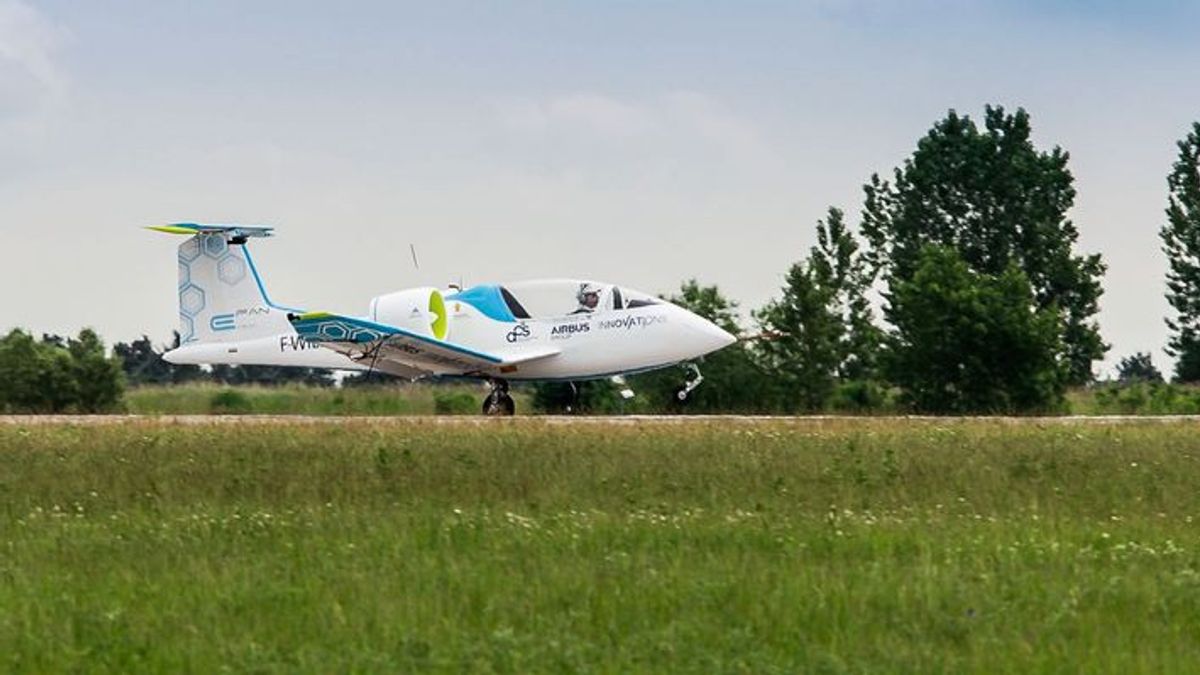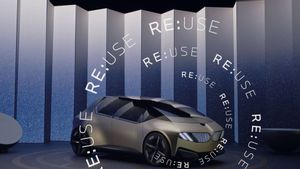JAKARTA - These days, electric cars are pretty much on the streets and are becoming more popular every year. However, for an electric-engined airplane, it has not yet become a viable product to be discussed further. But there are already ideas that lead to it.
Airplanes are bad news for the environment because they emit a lot of CO2 every day. With this form of travel posing a threat to our planet, it's natural for us to wonder: why can't we manufacture electric airplanes?
Airplanes that carry hundreds of people at once are very economical. Planes are huge, and, unlike buses, they need to cover hundreds or thousands of miles. So, in building electric aircraft, other considerations must be made beyond the requirement for smaller electric ground vehicles. But the one thing that connects it all is the battery.
Several airlines have considered using batteries in electric aircraft, but there is still a problem: batteries with large energy output will be needed to do so. But this is far from impossible. In fact, scientists have already begun to make great strides toward successfully powering commercial aircraft with an exciting discovery: polymer ionic liquids (PIL).
Several years ago at MIT, batteries with twice the energy yield of traditional lithium-ion batteries were developed, using liquid polymer ions as the energy source. This is a great advancement, but these batteries need to be made lighter to suit air travel. After all, the weight of the aircraft is an important element in its flight. That's why all airlines have baggage weight limits!
Another element that must be considered is the energy consumption during the flight. Electric cars can be charged at stations if they run low on electricity during the trip, but planes cannot do this during mid-air flights. This would make transatlantic flights difficult if the batteries in the planes could not power the entire journey.
In short, the electric plane has been tested in flight. This didn't happen recently. In fact, a flying electric plane made a comeback in the summer of 2015. It's called the E-Genius, and can only accommodate two people. It takes pilots from Germany to Milan and flying over the Alps and the streets of France.
There was even a flight that took place in 2009 over the Alps, but this was solar-powered, not battery-powered. Of course, above the clouds, solar energy is abundant, so solar power makes sense. Similar flights have been carried out using solar power, such as Germany's Elektra One and Japan's Solar Impulse.
European aerospace company Airbus is also trying an electric plane called the E-Fan. The electric plane was first flown in June 2014 at a British air show. However, Airbus canceled production of the E-Fan in 2017, when the company decided to focus more on crafting hybrids rather than just electric. This made way for E-Fan X. However, when the COVID-19 pandemic hit, the project was canceled again.
While these electric planes are impressive, they can only carry a handful of passengers (usually the pilot only) and don't travel very long distances. So it's important to remember that larger commercial airplanes need to carry much larger energy stores to carry hundreds of passengers and cover longer distances, as this is important for commercial airlines.
SEE ALSO:
Air travel has come a long way since the Wright brothers' plane first took to the skies in 1903. But developing a fully electric commercial airplane may prove to be an important step in lowering our carbon footprint and saving our planet. So, when are we going to start seeing bigger electric planes being developed?
Do not be afraid. Currently under development. EasyJet, a British airline, has partnered with Wright Electric, a relatively new American airline, to develop a larger electric plane that can seat 180 people.
It's still not as big as a traditional commercial airline, but it's a big leap in the right direction. Both companies hope to have the aircraft available for commercial flights within the next ten years if all goes well.
So, despite past failures, airlines still have a clear focus on developing electric aircraft, and it may not be long before we see them fly commercially.
The English, Chinese, Japanese, Arabic, and French versions are automatically generated by the AI. So there may still be inaccuracies in translating, please always see Indonesian as our main language. (system supported by DigitalSiber.id)













